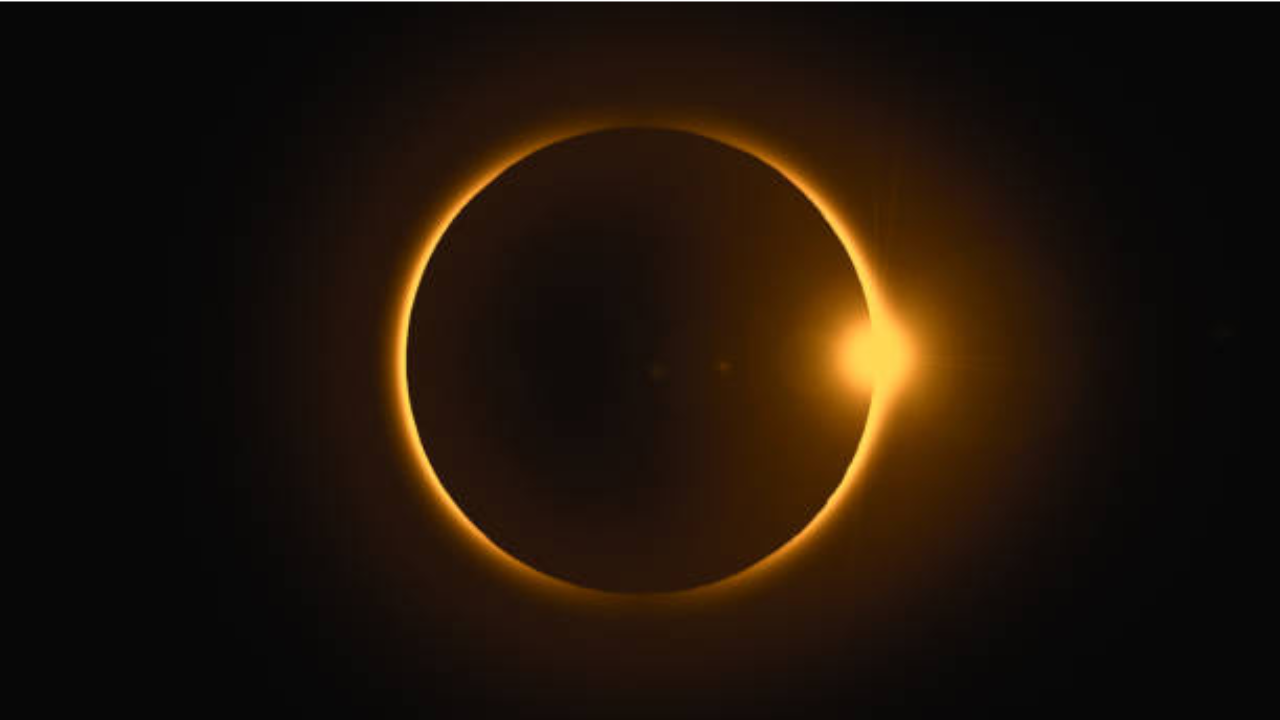NEW DELHI: Infrequent occurrences mark the celestial calendar as a solar eclipse approaches, promising to deliver a striking display of cosmic wonder like the “Ring of Fire“, an annual solar eclipse set to occur in the US on October 14, 2023.
Many years go by between these amazing celestial events. The last one happened in 2017 when a total eclipse made the afternoon skies in America look like dusk. It’s been even longer since we saw an annular solar eclipse like the one that will travel across the United States on Saturday, starting from the Oregon coast and ending at the Texas Gulf Coast.
“I think humans have a deep connection with the night sky,” Cameron Hummels, director of astrophysics outreach at the California Institute of Technology, told USA TODAY.
“Astronomical events like eclipses, meteor showers, and the northern lights are a way in which they can experience it first-hand,” he added.
The “Ring of Fire” celestial event holds great significance for both amateur sky watchers and professional astronomers. To fully appreciate this eclipse, being in the right place at the right time is crucial.
During the eclipse, it’s possible to observe the Sun’s outer atmosphere, known as the corona, which is typically obscured by the Sun’s intense brightness. This provides an excellent opportunity for experts to gather valuable data.
During this event, the Sun will be partially obscured by the Moon, creating the mesmerizing “Ring of Fire” effect.
The Moon’s shadow will pass over North America and South America during this eclipse.
A solar eclipse is a rare celestial event when the Moon passes between the Earth and the Sun, casting its shadow on our planet. What will occur on October 14 will be a partial solar eclipse.
In a partial solar eclipse, the Moon blocks only a portion of the Sun’s light, resulting in a partial darkening of the sky. This type of eclipse is more common and can be observed from a broader geographic area.
Many years go by between these amazing celestial events. The last one happened in 2017 when a total eclipse made the afternoon skies in America look like dusk. It’s been even longer since we saw an annular solar eclipse like the one that will travel across the United States on Saturday, starting from the Oregon coast and ending at the Texas Gulf Coast.
“I think humans have a deep connection with the night sky,” Cameron Hummels, director of astrophysics outreach at the California Institute of Technology, told USA TODAY.
“Astronomical events like eclipses, meteor showers, and the northern lights are a way in which they can experience it first-hand,” he added.
The “Ring of Fire” celestial event holds great significance for both amateur sky watchers and professional astronomers. To fully appreciate this eclipse, being in the right place at the right time is crucial.
During the eclipse, it’s possible to observe the Sun’s outer atmosphere, known as the corona, which is typically obscured by the Sun’s intense brightness. This provides an excellent opportunity for experts to gather valuable data.
During this event, the Sun will be partially obscured by the Moon, creating the mesmerizing “Ring of Fire” effect.
The Moon’s shadow will pass over North America and South America during this eclipse.
A solar eclipse is a rare celestial event when the Moon passes between the Earth and the Sun, casting its shadow on our planet. What will occur on October 14 will be a partial solar eclipse.
In a partial solar eclipse, the Moon blocks only a portion of the Sun’s light, resulting in a partial darkening of the sky. This type of eclipse is more common and can be observed from a broader geographic area.
Denial of responsibility! Swift Telecast is an automatic aggregator of the all world’s media. In each content, the hyperlink to the primary source is specified. All trademarks belong to their rightful owners, all materials to their authors. If you are the owner of the content and do not want us to publish your materials, please contact us by email – swifttelecast.com. The content will be deleted within 24 hours.


